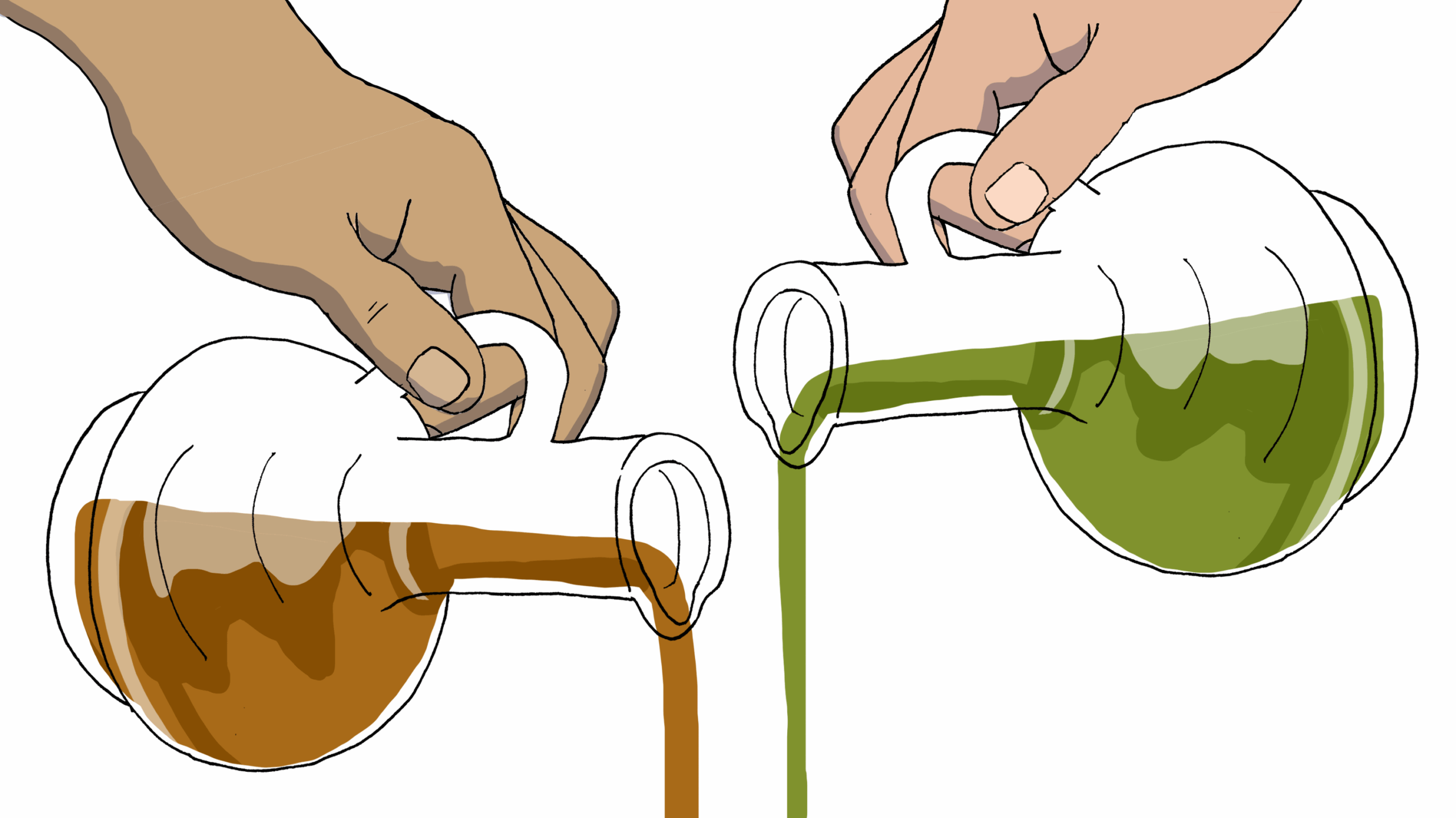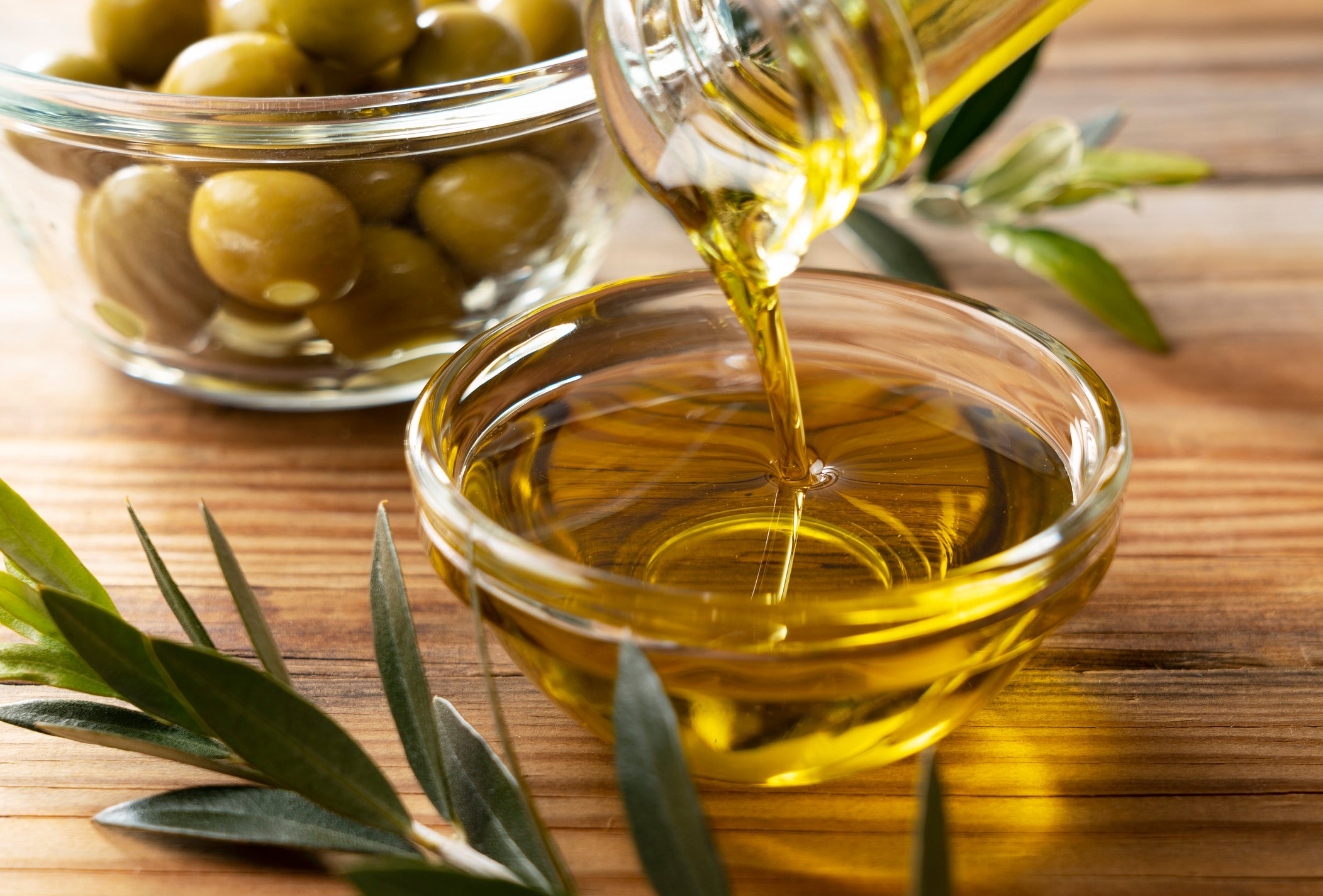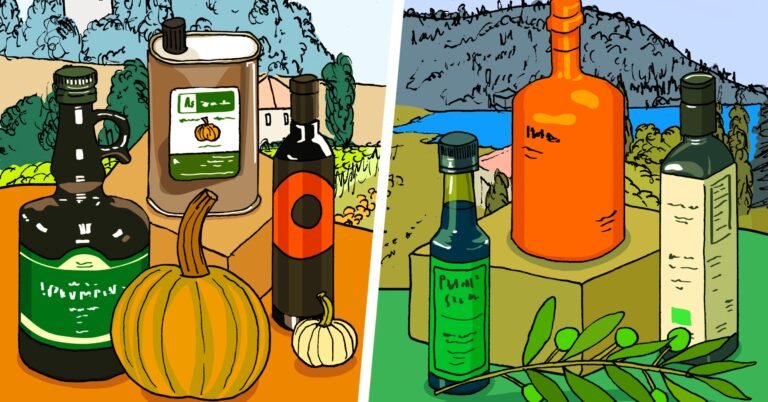Many years ago, Slovenian chef Anna Roche said in an interview that the biggest battle between couples in her country revolved around salad dressing. People from the south preferred olive oil, while those from the north only reach one of the pumpkin seeds. This culinary division perfectly illustrates the rich regional products of the European Union. Traditional ingredients tell the story of both the place and heritage.
When I first tasted the seeds of Stilian pumpkin, a staple food in the historic Central European region that stretches from southern Austria to northern Slovenia, I was immediately engrossed. That toast, nutty flavor. The way it coats even accepts the tongue.
Not all pumpkin seeds are made equally, so the European Union PGI (Protected Geographical Adaptation) status is why such an important role plays. This special seal ensures that consumers choose Austrian Steirisches Kürbiskernöl PGI or Slovenia’s Stagelsco Prekmursko Bučno Olje PGI. Genuine quality and traditional products are guaranteed. To obtain a PGI seal, the oil must be produced, processed or prepared within these specific regions of Austria or Slovenia, carrying the generational knowledge of local pumpkin farmers, oil producers and chefs. It is evidence of both its nature and its cultural landscape.
“The farmland there is great conditions for growing pumpkin,” says Marcus Draxler, a former longtime meter hotel in New York City, from Styria, Austria. “There’s no mistake between the environment, the climate, the grass.” The connection with pumpkin seed oil runs deep. Growing up at his parents’ inn, he grew up on oil from a friend of his local family. “Pumpkin seeds are close to my heart,” he says, reflecting the deep roots of the local culinary identity.
The deep connection of pumpkin seeds to the terroir is reflected in every bottle. It starts with the pumpkin itself – cucurbita pepo var. Styriaca – That Has accidental mutations that are particularly suitable for the production of high quality oils: the seeds have no hull. “This is something like the biggest thing about this product,” explains second-generation Austrian-American producer, Carl Schracker. “For hundreds of years, they grew these pumpkins. Suddenly, it turned out that the seeds were no longer hulls.” In other words, they are ready to come out of the pumpkin and be pushed into the oil with minimal processing.

The production process was not easier. Wash and dry the seeds, then grind and roast with water and salt before pressing. No refinements, chemical additives or neutral oils added. This is guaranteed by the PGI seal. Its stunning dark green shade is one of its calling cards. Its unique taste is the other.
“The best flavor on the planet,” says Jan Wilker of Queens’ beloved ice cream window. Growing up in Germany, Wilker was the first to know pumpkin seed oil as a salad dressing, especially using mash and lamb lettuce. “That salad, along with this oil, is a great mix.” But at his seasonal ice cream stand in Ridgewood, he transformed this traditional ingredient into something unexpected.
Their signature “Styrian” flavor, made with Austrian styrian pumpkin seed oil, has become more than just ice cream. This is a heritage flavour. It’s not uncommon to enjoy the oil poured over the vanilla ice cream, but the ice cream window incorporates it directly into the base, adding pine nuts to strengthen its natural nuts. “Ice cream goes from this beautiful gradient, dark critch green to light green. I think it looks really beautiful,” says Wilker. “People are always very excited when we announce that we have it for the first time every season.”
It’s no coincidence that the ice cream windows found a home in Ridgewood. This Queens neighborhood was home to Central European families, including the important community of Gottsiers, a German descendant who settled in southern Slovenia. “All Gottsshers who are still alive in this neighborhood, they still use that oil,” Wilker points out. “It’s all grown in that particular oil, so this is their ice cream flavour. We made this ice cream for them.”
Marx Grocker, Austrian chef at Coroman, a midtown restaurant, is another fan. “There’s nothing better than folding high-quality pumpkin seed oil into freshly spun vanilla ice cream,” he says. The ice cream combination may sound luxurious, but his connection to the oil is deeply rooted in tradition. “I definitely grew up with that. It’s oil, not white truffles,” he laughs. “It’s a familiar flavour. It feels like you’re home.”
The versatility of pumpkin seed oils extends well beyond desserts to tasty territory. Glocker created a pumpkin seed oil focaccia with salted butter sprinkled with pumpkin seeds. Key, he explains, respects the delicate nature of the oil and the points of low smoke. “You don’t want to annihilate it,” he says. So his focaccia is intentionally thin and baked quickly.
All across Central Europe, this oil finds its way into countless traditional dishes. Draxler fondly recalls his mother’s sulfur, a beef and vegetable terrine finished with pumpkin oil vinaigrette, and recommends the simple pleasure of drizzling over scrambled eggs. It brings richness to autumn favourites like pumpkin soup and gnocchi, but in Slovenia it elevates everything from pastry poticas like Babka to local Sawellkraut known as cheeseberisias like feta and Kiss Roserie.
Pumpkin seed oil tells the story of the northern regions of Central Europe, but the southern regions of the country share olive oil, a treasure protected by another European Union. In the Istria region, shared with Croatia, olive oils like the Ekstra Deviško Oljčno Oljeolje slovenske ISTRE PDO carry official EU designations. This certification requires that every stage of production occur within designated areas, from harvest to bottling, preserving centuries-old traditions dating back to ancient Greece and Roman times.

The terroir here tells its own story – its iron-rich local soil, distinguished by its red clay, gives it a definite minerality that has attracted the attention of global enthusiasts. Floss Olay, a respected Rome-based Extra Virgin Olive Oil Guide, consistently ranks Istrian Olive Oil among its top international products.
Moving further south along the Dalmatian coast of Croatia, you will discover the full representation of the Chartanscomasrino Bowlge PDO on Charta Island. This distinctive oil was produced off the coast from Split and gained international recognition from Tokyo to Dubai due to its fresh, grassy flavor and slightly bitter backbone. In the local kitchen, they are cherished with humble preparation. Grilled fish, Britoba and potatoes are traditional Croatian side dishes, drizzling over Swiss food. This versatility extends to more robust pairings. The oil character stands up beautifully on bitter vegetables like arugula and dandelions, and in my kitchen, it becomes a roccoli rabe favorite.
The character of the Chartansko Maslin Urje Pud comes primarily from the Orika olive variety, a heartfelt fruit that thrives in the harsh weather conditions of the island. You can almost taste it with the spicy notes of oil. It’s strange that terroirs appear on your tongue.
Salad dressing choices – pumpkinseed or olive oil – can inspire the biggest fight between Slovenian couples, but there is no such conflict in my own kitchen. Both oils have been rich in warm potato salad, adding unexpected depth to yogurt, and even elevated – not judges – touna salad, which has become trusted ally. Pumpkin seeds remain my secret weapon, especially for impressing dinner guests with ice cream tricks (for those who haven’t gone to Queens).
But at the end of the day, I always think of Anna Roche. And he still has the support of another top chef. “It’s perfect for salad dressing,” says Glocker. I agree. When making salads, and sometimes using ice cream, use both.
More Food – Visit US.campaign.europa.eu, follow @morethanfoodus on Instagram, follow us more than food on LinkedIn, listen to the delicious European stories of the podcast series on Spotify, and discover some amazing food and drinks from the European Union.


